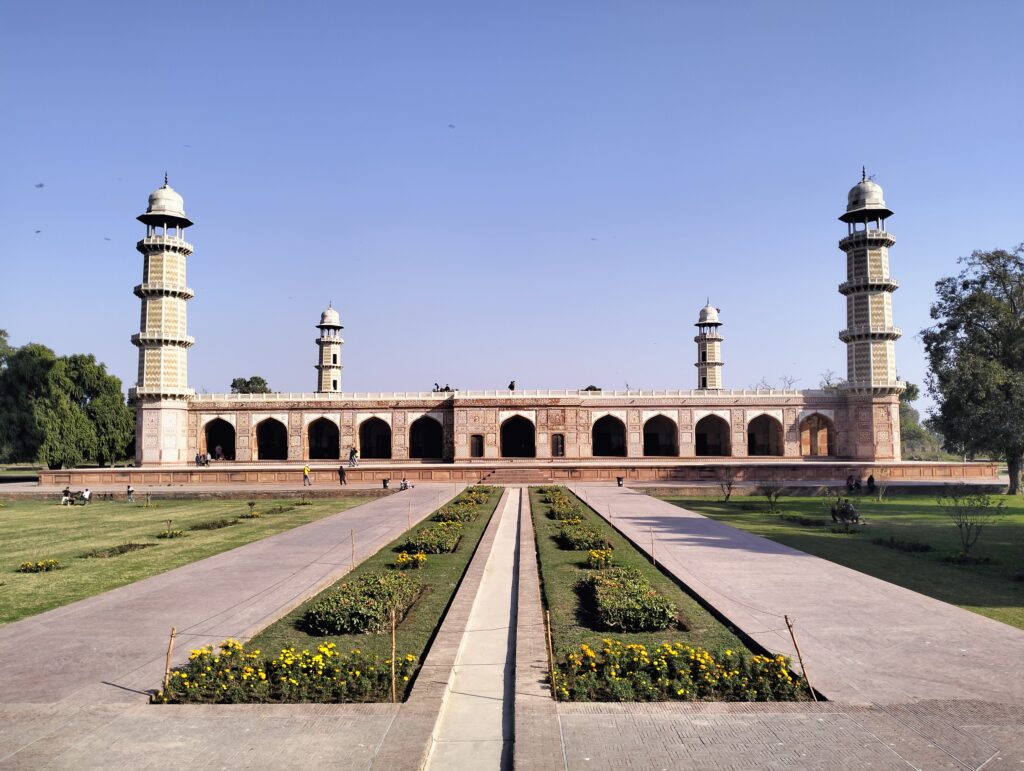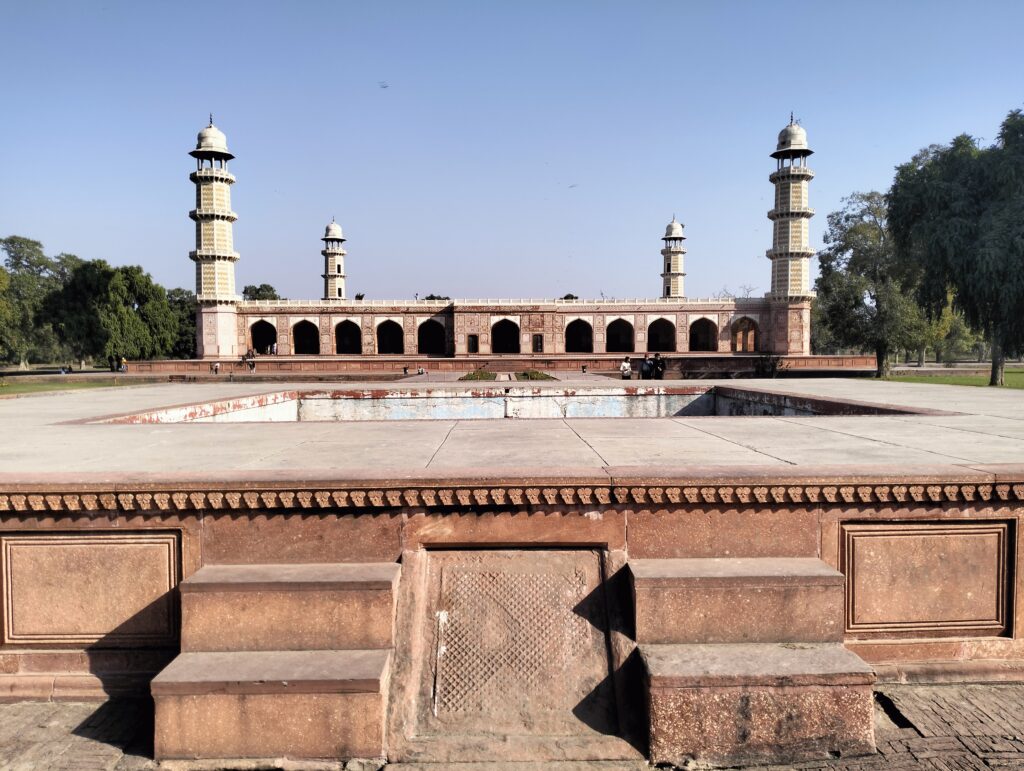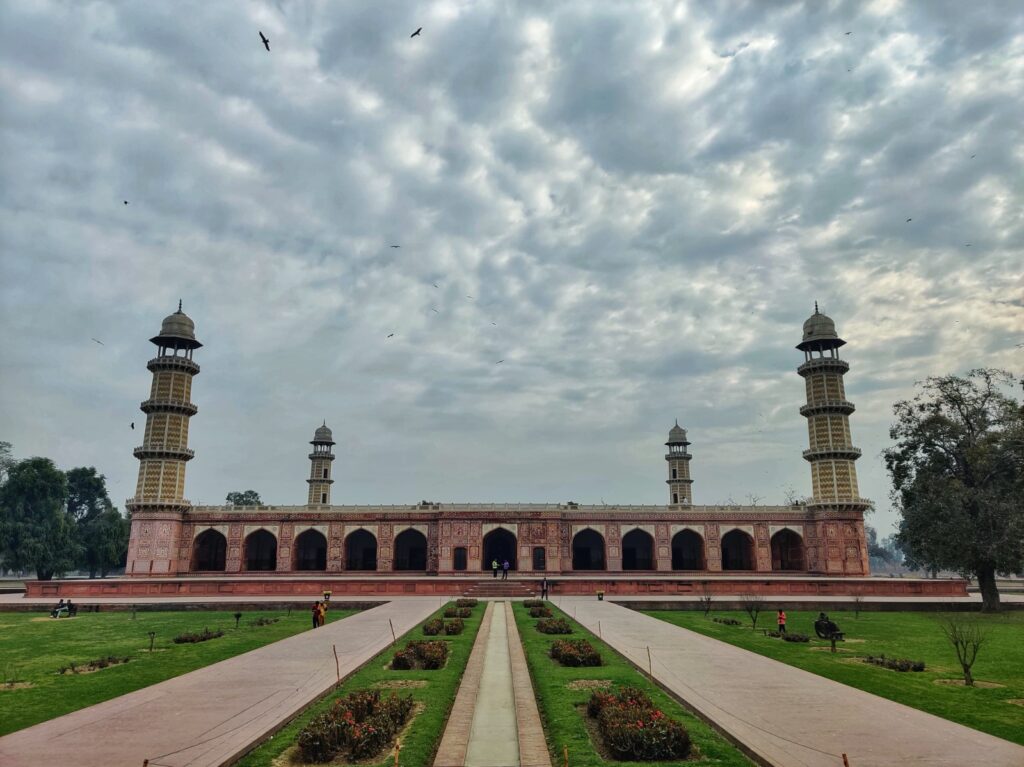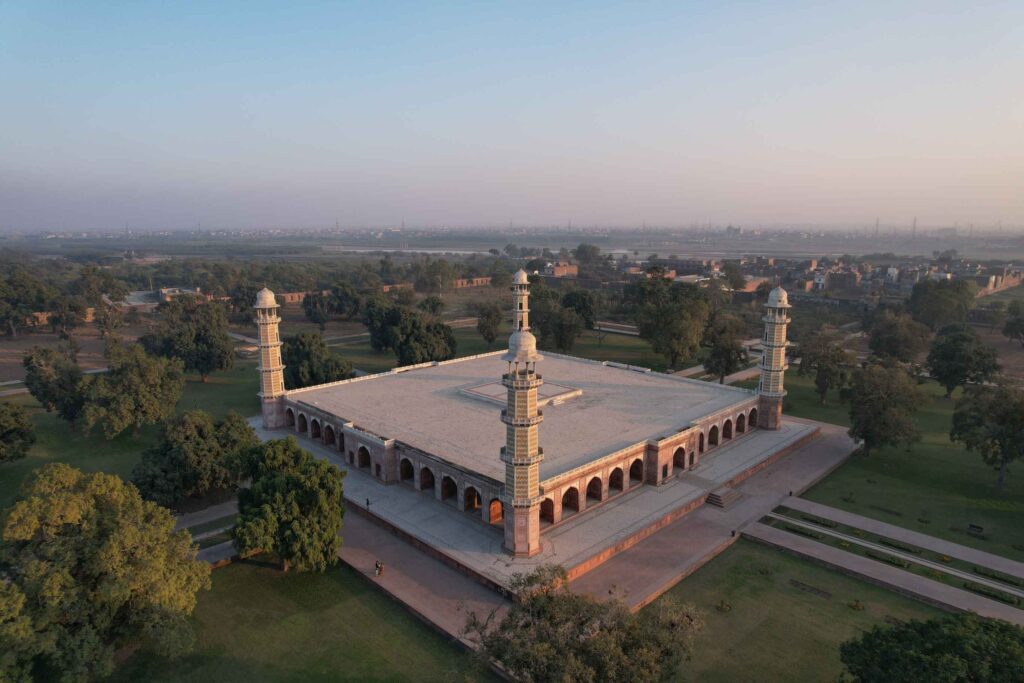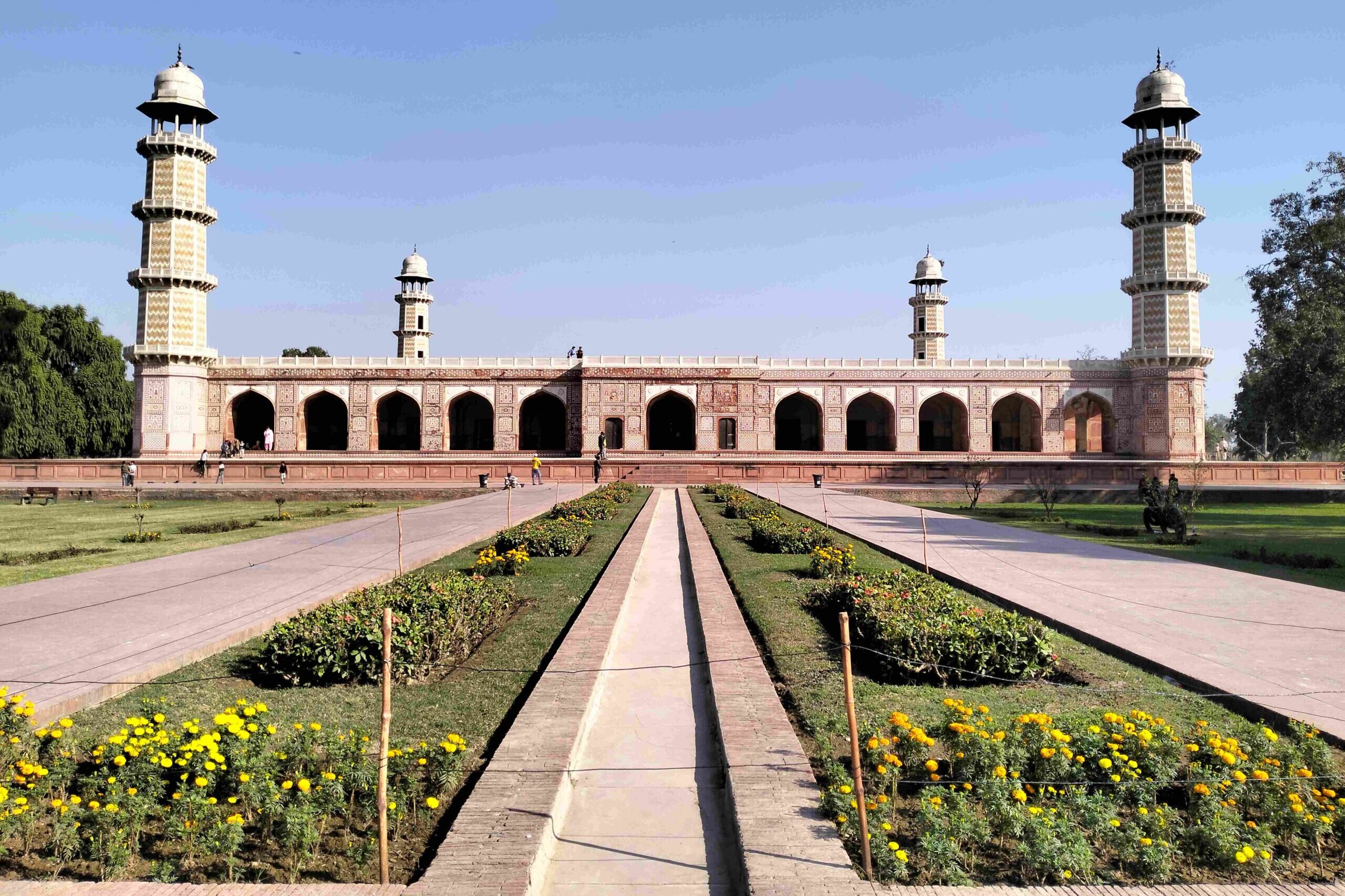
The Fourth Mughal Emperor Nuruddin Muhammad Salim (Jahangir) died at Rajouri in 1627 CE, on the way to Kashmir where he had gone to rejuvenate his health. Emperor Jahangir buried in his wife Noor Jahan’s old pleasure garden called Dilkusha Bagh, as the area had been a favorite spot of him while he resided in Lahore.
The Tomb was Built and completed by Shah Jahan at the cost of 1 million in 1637 CE. The tomb is single-storey square building and is set in a luxuriant square garden of “Chaharbagh” style. Each corner of the building is surmounted by an octagonal minaret which is structurally attached to the main building. The most striking feature of the building is its arcaded verandah of the inner sanctuary, which runs in front of the series of rooms and four vaulted bays lead to the central burial chamber. The burial chamber contains the marble tomb stone of the Emperor marking the grave underneath. The sarcophagus and the platform are convolutedly inlaid with semi-precious and precious stones depicting floral pattern and ninety- nine attributes of Allah. The bay leading to the grave is profusely ornamented with fresco paintings on the ceiling and side walls at dado level, bedecked with tile mosaic work. Designs finished with cut pieces of various stones such as Snag-e-Badal, Sang-e Abri, and black and white marble on the floor making the overall aesthetic impact more enchanting. Hardly any part is left unembellished.


